Are you looking for a contractor?
Submit our quick form and get quotes now!
Table of Contents
6 min read
Understanding the Basic Workings of a Heat Pump
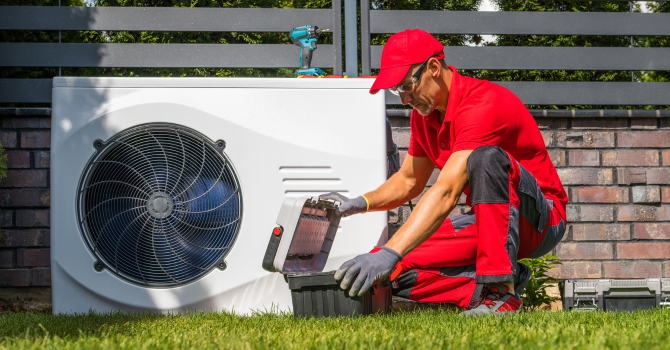

6 min read
Understanding the Basic Workings of a Heat Pump
Heating and Air Conditioning systemsUnderstanding the Basic Workings of a Heat Pump
Effective and economical, heat pumps are one of the most sought-after heating and cooling systems. Yet, there is one lingering question: How does this device work exactly? This article details the fundamental workings of a heat pump, its advantages for your home, and how to choose the model best suited to your needs.
What is the purpose of a heat pump?
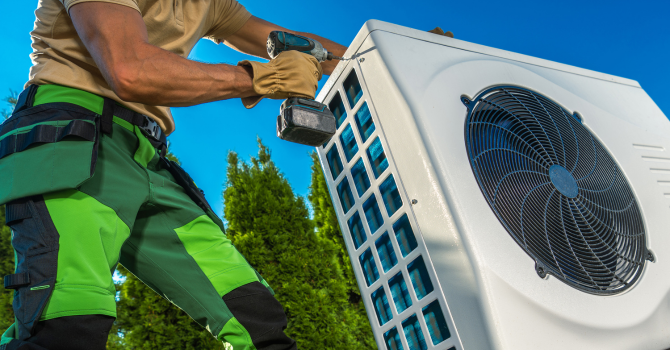
Source: Canva
A heat pump is an electronic device that transfers heat from one area to another. It works as a heating system during the winter and as a cooling unit during the summer. Some heat pump models can also generate hot water.
During the colder months of the year, using a heat pump allows you to swiftly heat a room while also limiting the use of a space heater, which results in energy bill savings. Indeed, 1 kWh of electrical energy used is equivalent to 3 or 4 kWh of household thermal energy. Based on that, heat pumps are at least three times as effective as standard baseboard heaters.
Note that there are several different types of heat pumps, as listed below.
Air-Source Heat Pump
An air-source heat pump, also known as an air-to-air heat pump, is a heating and cooling device that’s widely common across the globe. Depending on weather conditions, it relies on the transfer of warm and cool air between indoor and outdoor settings. These units can be installed in homes without a central heating system or those equipped with a warm air heating system.
Water-to-Water or Geothermal Heat Pump
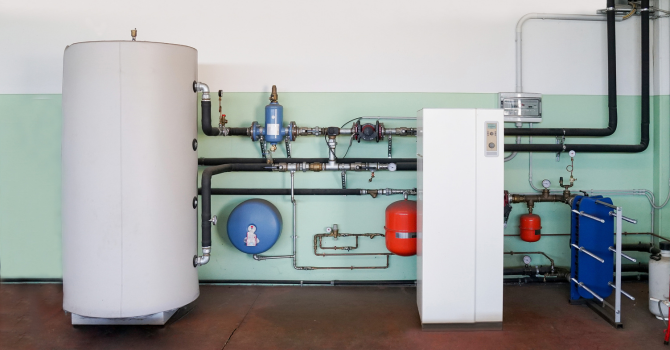
Source: Canva
The water-to-water or geothermal heat pump uses water as a way to either warm up or cool down a home. It consists of a heat exchanger, a heat pump unit, and a hydronic distribution system. The water, once heated or cooled, transfers the warm or cool air throughout the home.
Heat Pump Water Heaters or Air-to-Water Heat Pumps
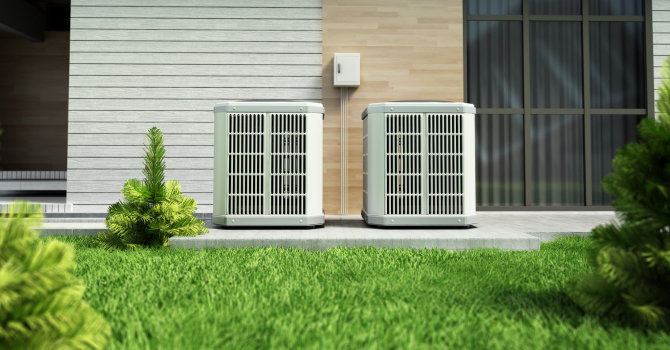
Source: Canva
A heat pump water heater, or air-to-water heat pump, is a very cost-effective heating and sanitary hot water generating solution. The fundamental workings of this device are based on a heat pump technology, meaning the retention of energy found in outside air to heat the water found in the hot water vessel.
Heat Pump: Hub-Based or Localized Efficiency
Bear in mind that there are two main heat pump models: the wall-mounted device and the central heat pump. Both carry out the same function (home heating and air conditioning) but have a few differences. See below.
Wall-Mounted Heat Pump
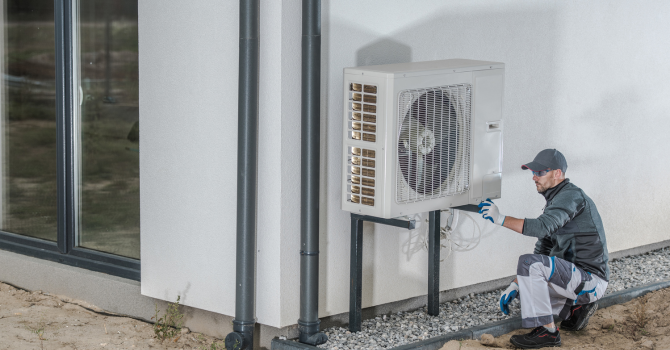
Source: Canva
The wall-mounted heat pump is a two-part apparatus. The first unit is installed on a wall inside the dwelling, while the other unit is installed outdoors. Both units work together, transferring outside air inside while warming it up. The same principle is used to cool the home—circuit inversion.
Since the device is wall-mounted, a wall heat pump will generate localized heat and won’t efficiently heat every area of the home.
Central Heat Pump
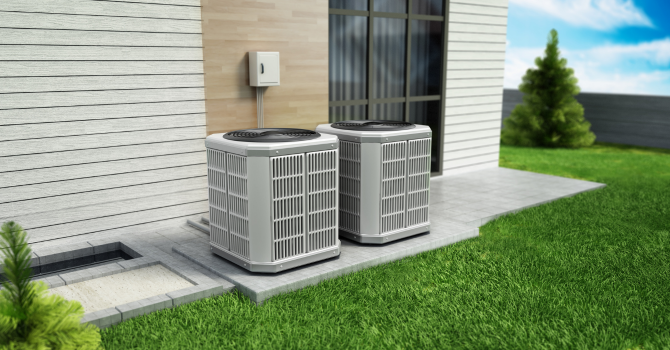
Source: Canva
As for the central heat pump, it’s installed inside the home and connected to the household’s ventilation ducts. Said device is more efficient than a wall-mounted heat pump on account of its ventilation ducts, which evenly channel heat into every room of the dwelling. If your home has several rooms, the central heat pump is the best model to ensure efficient heating.
How does a heat pump compressor work?
To discuss the workings of a heat pump, you first have to understand that it doesn’t work based on the principles of other, standard, heating systems. Instead of generating heat like a boiler, it gathers heat from a space and transfers it to another area. It basically works according to the same principle as a refrigerator that runs off retained heat, which will then be released by a refrigerant gas.
Heat pumps work similarly by channelling the liquid refrigerant via evaporation and condensation cycles. A mechanical device known as the compressor pumps the refrigerant from two heat exchanger coils. One of the coils is responsible for evaporating the refrigerant in a closed, low-pressure circuit, absorbing outside heat. As for the other coil, it condenses high-pressure refrigerant, which warms it up, and said heat is released by fans throughout the house.
Why is my heat pump not working during the winter?
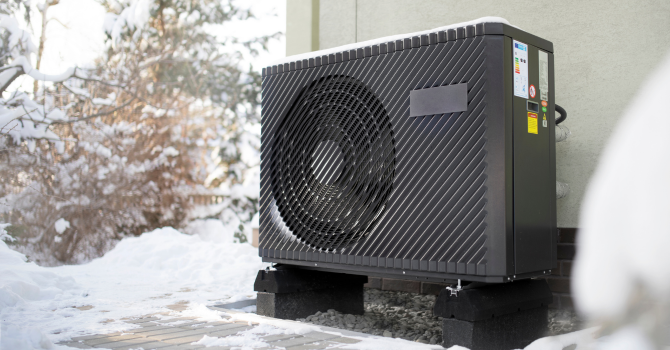
Source: Canva
Most heat pumps have a -8°C threshold, which is considered the device's lowest working temperature. Once temperatures reach said threshold, the heat pump will cease functioning. In Canada, where temperatures are very cold during wintertime, it may be that your heat pump will power down once it reaches its temperature threshold. However, there are heat pumps designed for low-temperature use that function in temperatures as cold as 20°C below zero.
Low-Temperature Rating and Efficiency
Cold climate heat pumps are designed to maintain a warm temperature inside homes even during glacial temperatures. It’s a heating solution that’s especially suited to the harsh Canadian winters.
It may be that even said function doesn’t suffice to heat your home, and that’s why it’s advised to also have an electric heating system installed, such as an electric furnace or baseboard heaters. Additional heating options will take over during especially cold days, in such a way that you can benefit from uninterrupted optimal heating.
How to Program Household Central or Wall-Mounted Heat Pumps
To optimally program a central or wall-mounted heat pump, you first have to set your device’s thermostat to an ambient temperature that’s 3°C above that of other systems. That way, your heat pump will be the first heating system triggered. Then, set the temperature of your radiant heating system lower to ensure a stable flooring temperature. Lastly, use your baseboards as backup space heaters when your heat pump can’t keep up, heating-wise.
TIPS: To use your heat pump as efficiently as possible, carry out a maintenance routine on your unit at least once per season. Remember to close off less-frequented areas in favour of high-traffic areas for more efficient heating.
Using a Heat Pump in Canada
In a nutshell, using a heat pump when residing in Canada translates into an effective and ecological heating and air conditioning solution. Given the country’s harsh winters and oftentimes brutal summers, such systems provide optimal, year-round thermal comfort, while reducing the carbon footprint and the need for fossil fuels.
Whether it be for environmental, economic, or comfort reasons, heat pumps have become the most sought-after option for many Canadians, contributing to a clean and sustainable energy transition.
Get 3 quotes for your heat pump installation
RenoQuotes.com can help you get quotes for your air forced-air heating system project. When you submit your project, we’ll then put you in contact with top-rated contractors. Fill in the form on the homepage (it only takes a few minutes) and get estimates from trusted professionals.
Dial 1-844 828-1588 to speak with one of our customer service representatives.
Last modified 2024-04-15